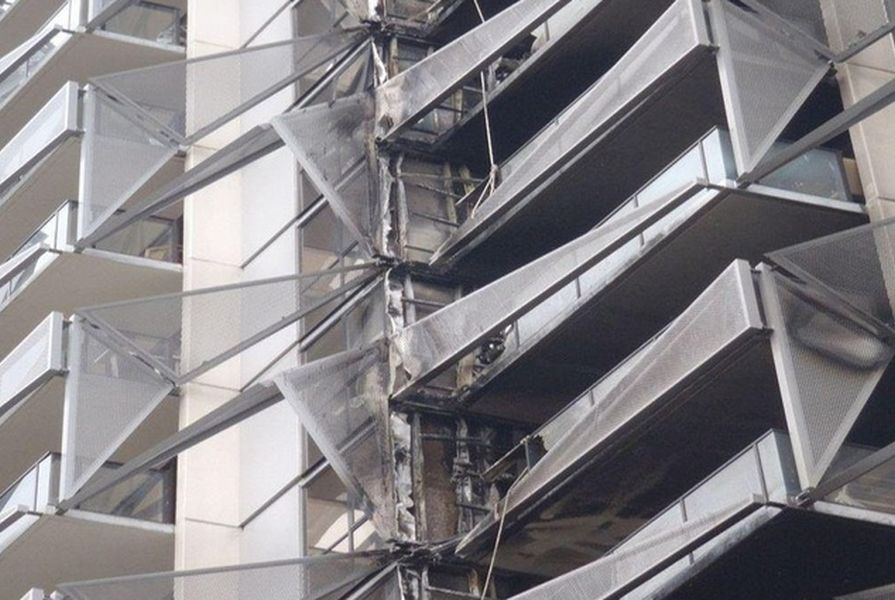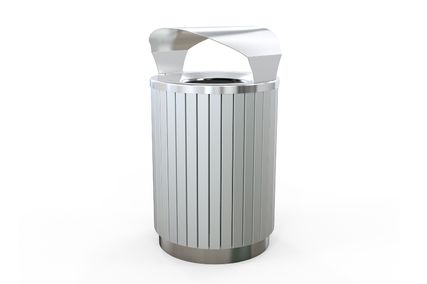Victoria’s highest court has rejected an appeal from three consultants who were found to be liable for damages to a Docklands apartment building that caught ablaze in 2014.
The fire was sparked by an cigarette butt and subsequently raced up the building’s aluminium composite cladding. The specification, installation and assessment of the cladding material thus became a crucial issue in the legal proceedings brought on by the owners against the builder.
In 2019, the Victorian Civil and Administrative Tribunal ruled that the architect of the Lacrosse apartment building, Elenberg Fraser, the building surveyor and fire engineer had each breached their respective contracts with the builder, LU Simon, which in turn was liable to the building’s owners for the $12 million in current and anticipated future losses.
The tribunal apportioned 25 percent of the liability to the architect, 33 percent to the building surveyor and 39 percent to the fire engineer. The judge ordered $5.75 million to be paid by the builder initally, with the consultants to reimburse the builder and pay for the remainder of losses as they arose.
The three consultants appealed the tribunal’s decision, proposing 25 grounds for appeal and 11 issues that required resolution. However, the appeals court rejected all grounds for appeal made by the architect.
The court considered two issues relating directly to the architect. First, whether Elenberg Fraser had directed the builder to select, or permitted the builder to select, the product Alucobest “or any composite metal cladding product that was contrary to the Building Act 1993 and the Building Code of Australia”; and second, whether the Tribunal erred in finding that Elenberg Fraser was “negligent in respect of its inspection and approval of the Alucobest sample.”
The tribunal had originally found that Elenberg Fraser breached its contractual obligations to the builder when it specified a cladding material “indicative to Alucobond.”
Elenberg Fraser contended that the specification did not necessarily prescribe the use of an aluminium composite panel (ACP) with 100 percent polyethylene core; that the specification of an ACP product did not constitute a “failure to take care;” and, crucially, that “it was for LU Simon, in the implementation of the T2 Specification, to select materials that complied with applicable legal requirements.”
The court rejected Elenberg Fraser’s submissions. “Quite simply, Elenberg Fraser’s reliance on the terms and conditions of the D&C Contract [design and construct contract] (including the T2 Specification) to make good that submission is misplaced.
“To construe the T2 Specification as submitted by Elenberg Fraser would require us to ignore the obligations expressly imposed on Elenberg Fraser under the Elenberg Fraser Agreement and would have the unreasonable result of absolving Elenberg Fraser of its liability to LU Simon as a consequence of the contractual obligations owed by LU Simon to the developer.”
On the matter of negligence in the inspection and approval of the Alucobest sample, Elenberg Fraser had told the original tribunal hearing that “its obligation to inspect and approve samples [was related to] visual characteristics only and did not extend to approving a sample on the basis of its regulatory compliance.”
The appeals court found that “The proper construction of that obligation is the legal question underpinning the first of the ‘two distinct breaches’ determined by the Tribunal to flow from Elenberg Fraser’s ‘inadequate assessment of the Alucobest sample’.
“Significantly, Elenberg Fraser does not raise any ground of appeal in relation to the second of the two breaches, that is, the breach of its broader obligations as head design consultant. It leaves undisputed the findings underpinning that breach.”
“As a consequence, even if we found that the Tribunal erred in its construction of the Sample Approval Obligation, the Tribunal’s ultimate conclusion that Elenberg Fraser breached its broader obligation as head design consultant as a result of its inadequate assessment of the Alucobond sample, remains unchallenged.”
The court also considered issues raised by the three consultants regarding whether the builder LU Simon was a concurrent wrongdoer under the Wrongs Act 1958 and if it also failed to take reasonable care.
“Elenberg Fraser submitted that the Tribunal failed to consider the question of LU Simon’s selection of Alucobest in the context of its responsibilities as a builder. Elenberg Fraser submitted that there was a case in negligence advanced against LU Simon at trial that even if the T2 Specification permitted LU Simon to select Alucobest, as a builder, LU Simon was negligent because it selected a product that did not comply with the BCA.”
“We are unpersuaded by the submissions of Elenberg Fraser that the Tribunal somehow considered the selection process engaged in by LU Simon ‘in the context of a designer but not in the context of the responsibilities of a builder,’” the court said. “To the contrary, the Tribunal’s Reasons […] show that the issue of LU Simon’s selection of the ACPs was one that the Tribunal considered in the wider context — taking into account the terms of the D&C Contract and the terms of the consultants’ agreements.”
The original tribunal decision was labelled a “landmark” with “significant ramifications right across the building and construction sector” by then national president of the Australian Institute of Architects Clare Cousins.
Bronwyn Weir, a lawyer and author of the Building Confidence report, wrote, “This decision confirms that courts will expect architects to prepare documents that demonstrate BCA compliance. The involvement of other specialist consultants does not relieve the architect from its obligation to understand and apply the BCA to its design.”
















